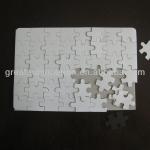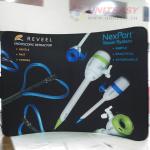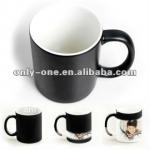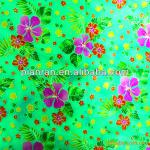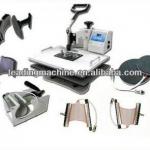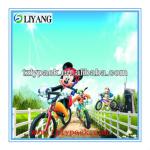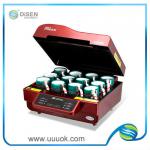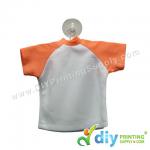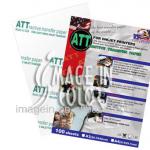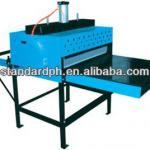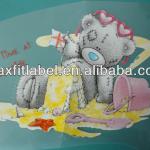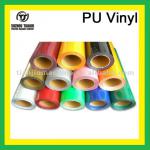T-shirts silk screen transfer printing - DS-screen-1
| Method: Heat Transfer Printing | Usage: Cotton | Place of Origin: Guangdong China (Mainland) | Brand Name: Disen |
| Model Number: DS-screen-1 | Printing speed: 1000Pcs/Hour | Supply Ability: 10,000pcs per day | Factory Size: 1500 square |
| Name: silk screen transfer printing | No. of R&D Staff: 11-20 People | Main Markets: the world | Export Percentage: 80%-90% |
| Total Annual Sales Volume: US$2.5 Million-US$5 Million | Service: OEM and ODM order are accepted | Applications: Advertising T-shirt |
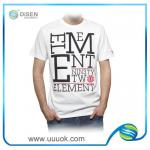
| Customer First Service First |
| silk screen transfer printing Our main products are printing t-shirts, polo-shirts, hoodies and baseball caps. Here you will get the most competitive prices together with good product quality and best services. Hope we can be your trusted partner and friend in China. Factory Information Factory Size:1500M2 QA/QC:In House No. of R&D Staff:11-20 People No. of QC Staff:5-10 People Supply Ability:10,000pcs per day Contract Manufacturing:OEM Service Offered, Design Service Offered, Buyer Label Offered, etc Main Markets:Europe & America& Australia The world Total Annual Sales Volume:US$2.5 Million-US$5 Million Export Percentage:61%-70% Product Details Fabric composition:100% cotton perfect (combed, semi-combed), T/C, CVC. 130-160-180--200--240--350GSM Ready colors:white, black, red, yellow, orange, royal blue, light blue, dark blue, green, purple. Colors also can be customized if you provide Pantone number. Ready sizes:S-XXXL, size can be also be customized if size chart provided. Sample's Fee Ready Samples: 1pcs/style, it will be free for you. Custom Samples: The price is based on your artwork,print or embroidery designs,colors, and fabric materials. Sampling time: Within 3 days. Packaging Terms: 80-100pcs/CTN Measurement: 56*39*42CM We can also pack according to customer’s requirements. Products Overview Main Products:Round or V-neck t-shirts, polo shirts, hoodies, baseball caps Technics:Printing,Embroidery,Washing, etc Embroidery:Plane Embroidery,3D Embroidery, Appliqué Embroidery, Gold/Silver Thread Embroidery, Gold/Silver Thread 3D Embroidery,Paillette Embroidery,Towel Embroidery,etc Printing:Water Silk Screen Printing, Glue Silk Screen Printing, Plastisol Ink Printing, Heat-Transfer Printing, Flock Printing, Discharge Printing, Pigment Printing, Multicolor Printing, Puff Printing, Gold/Silver Printing, Rubber Printing, Digital Printing, Glitter Printing, Reflect Printing, etc Washing:Garment Washing, Destroy Washing, Enzyme Washing, Sand Washing, Bleach Washing, Chemical Washing, etc We’re looking forward to hearing from you, and hope to have the opportunity to work together with you in the future. Please do not hesitate to contact me if you want to know more details about our products and factory. T Shirt Screen Printing Cheap OEM Hottest Fashion Printing/Embroidered Cotton T-shirt Service:OEM/ODM Business Model:Manufacturer Port:china Detail Description Specification:
Advantage:
|
| Customer First Service First |
silk screen transfer printing silk screen transfer printing silk screen transfer printing silk screen transfer printing silk screen transfer printing silk screen transfer printing |
| Customer First Service First |
| Screen printing is a printing technique that uses a woven mesh to support an ink-blocking stencil. The attached stencil forms open areas of mesh that transfer ink or other printable materials which can be pressed through the mesh as a sharp-edged image onto a substrate. A fill blade or squeegee is moved across the screen stencil, forcing or pumping ink into the mesh openings for transfer by capillary action during the squeegee stroke. Screen printing is also a stencil method of print making in which a design is imposed on a screen of polyester or otherfine mesh, with blank areas coated with an impermeable substance, and ink is forced into the mesh openings of the mesh by the fill blade or squeegee and onto the printing surface during the squeegee stroke. It is also known as silkscreen,serigraphy, and serigraph printing. You can also have more than one colour printing, for example you could have a striped printing. Printing technique A screen is made of a piece of mesh stretched over a frame. A stencil is formed by blocking off parts of the screen in the negative image of the design to be printed; that is, the open spaces are where the ink will appear on the substrate. Before printing occurs, the frame and screen must undergo the pre-press process, in which an emulsion is 'scooped' across the mesh and the 'exposure unit' burns away the unnecessary emulsion leaving behind a clean area in the mesh with the identical shape as the desired image. The surface (commonly referred to as a pallet) that the substrate will be printed against is coated with a wide 'pallet tape'. This serves to protect the 'pallet' from any unwanted ink leaking through the substrate and potentially staining the 'pallet' or transferring unwanted ink onto the next substrate. Next, the screen and frame are lined with a tape. The type of tape used in for this purpose often depends upon the ink that is to be printed onto the substrate. These aggressive tapes are generally used for UV and water-based inks due to the inks' lower viscosities. The last process in the 'pre-press' is blocking out any unwanted 'pin-holes' in the emulsion. If these holes are left in the emulsion, the ink will continue through and leave unwanted marks. To block out these holes, materials such as tapes, specialty emulsions and 'block-out pens' may be used effectively. The screen is placed atop a substrate. Ink is placed on top of the screen, and a floodbar is used to push the ink through the holes in the mesh. The operator begins with the fill bar at the rear of the screen and behind a reservoir of ink. The operator lifts the screen to prevent contact with the substrate and then using a slight amount of downward force pulls the fill bar to the front of the screen. This effectively fills the mesh openings with ink and moves the ink reservoir to the front of the screen. The operator then uses a squeegee (rubber blade) to move the mesh down to the substrate and pushes the squeegee to the rear of the screen. The ink that is in the mesh opening is pumped or squeezed by capillary action to the substrate in a controlled and prescribed amount, i.e. the wet ink deposit is proportional to the thickness of the mesh and or stencil. As the squeegee moves toward the rear of the screen the tension of the mesh pulls the mesh up away from the substrate (called snap-off) leaving the ink upon the substrate surface. Textile items printed with multi-colour designs often use a wet on wet technique, or colors dried while on the press, while graphic items are allowed to dry between colours that are then printed with another screen and often in a different color after the product is re-aligned on the press. Most screens are ready for recoating at this stage, but sometimes screens will have to undergo a further step in the reclaiming process called dehazing. This additional step removes haze or "ghost images" left behind in the screen once the emulsion has been removed. Ghost images tend to faintly outline the open areas of previous stencils, hence the name. They are the result of ink residue trapped in the mesh, often in the knuckles of the mesh (the points where threads cross). Stenciling techniques A method of stenciling that has increased in popularity over the past years is the photo emulsion technique: 1.The original image is created on a transparent overlay, and the image may be drawn or painted directly on the overlay,photocopied, or printed with a computer printer, but making so that the areas to be inked are not transparent. A black-and-white positive may also be used (projected on to the screen). However, unlike traditional platemaking, these screens are normally exposed by using film positives. 2.A screen must then be selected. There are several different mesh counts that can be used depending on the detail of the design being printed. Once a screen is selected, the screen must be coated with emulsion and put to dry in a dark room.Once dry, it is then possible to burn/expose the print. 3.The overlay is placed over the screen, and then exposed with a light source containing ultraviolet light in the 350-420 nanometer spectrum. 4.The screen is washed off thoroughly. The areas of emulsion that were not exposed to light dissolve and wash away,leaving a negative stencil of the image on the mesh. Another advantage of screenprinting is that large quantities can be produced rapidly with new automatic presses, up to 1800 shirts in 1 hour. The current speed loading record is 1805 shirts printed in one hour, documented on 18 February 2005.Maddie Sikorski of the New Buffalo Shirt Factory in Clarence, New York (USA) set this record at the Image Wear Expo in Orlando, Florida, USA, using a 12-colour M&R Formula Press and an M&R Passport Automatic Textile Unloader. The world speed record represents a speed that is over four times the typical average speed for manual loading of shirts for automated screen printing. Versatility Screenprinting is more versatile than traditional printing techniques. The surface does not have to be printed underpressure, unlike etching or lithography, and it does not have to be planar. Different inks can be used to work with avariety of materials, such as textiles, ceramics, wood, paper, glass, metal, and plastic. As a result, screenprinting isused in many different industries, including: Balloons Clothing Decals Medical devices Printed electronics, including circuit board printing Product labels Signs and displays Snowboard graphics Textile fabric Thick film technology Screen printing press To print multiple copies of the screen design on garments in an efficient manner, amateur and professional printers usually use a screen printing press. Many companies offer simple to sophisticated printing presses. Most of these presses are manual. A few that are industrial-grade-automatic printers require minimal manual labor and increase production significantly. Analysis of screen printing trends and prospects screen printing market space China from the 20th century, 80 years, the speed of screen printing materials, equipment, technology research anddevelopment, so that screen-printing with flexo printing, offset printing, gravure played an advantage in competition. Rate of 7% annual increase. Currently there are about More than 70% of the wide format color screen printing with spot-color printing, nearly 30% using four-color overprint, and the proportion of four-color overprint is still increasing steadily. Industry survey showed that 70% of the annual output value of enterprises 100 million. But China's current total output value of the printing screen printing production value less than 2%, which have great potential to be tapped and broad development prospects. screen printing applications Survey shows that China Screen Printing Industry and the number of kinds of products sorted by manufacturers as follows:signs and panels, textiles and garments, plastic sheets, advertising materials, printed circuits, light boxes and so on.Emerging field of screen printing to an extraordinary rate, such as building materials, the system card, CD-ROM, security printing and so on. 1. Ad print Screen Printing in commercial advertising, there will be more market, some large companies, especially electric companies,tobacco companies promote their image in order to attach great importance to the role of advertising. Advertising time and to some extent determine the quality of the company's share of the market. Therefore, all kinds of electrical advertising,packaging and advertising, outdoor advertising, commercial ads to screen printing provides a broad space. In the commercial competition, because the large-scale outdoor advertising a wide field of vision, effective and taken seriously. So, as our screen printing large color outdoor ads along with the development of commercial advertising, the increasing volume showed large, cheap, colorful, save a long period, and fast delivery advantages, more and more cities are planning departments,advertising approved by regulatory agencies, attracting a lot of advertisers. 2. Packaging and Printing Packaging industry is the main service screen printing industry, target, screen printing technology continues to develop applications, will better serve the packaging and decoration industry, for packaging and decoration industry, while contributing to a more prosperous, but also for silk screen printing industry. |
| Customer First Service First |
| Packaging Detail:carton package,80-100pcs in a carton. We can also pack according to customer's requirements |
| Delivery Detail:one week |



